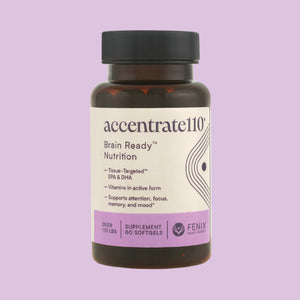How to Break the Cycle of ADHD Burnout and What Causes It

Are you stuck in the circle of ADHD burnout? Many describe ADHD burnout as much worse than regular burnout because it impacts both your body and mind. Along with mental symptoms such as mood swings and brain fog, you may also experience physical symptoms, such as frequent stimming, intense fatigue, and even muscle aches.
Adults with ADHD often struggle to complete everyday tasks, maintain focus, and stick to a consistent routine, and hiding these struggles through ADHD masking at work adds even more pressure.
This guide explores the real reasons why the ADHD burnout cycle keeps repeating and how to prevent burnout with practical coping strategies. You’ll also find ways to overcome burnout with self-care practices and learn when to seek professional support.
What Does ADHD Burnout Mean?
ADHD burnout is a long-lasting state of mental, emotional, and physical exhaustion linked to attention deficit hyperactivity disorder (ADHD) due to the stress of managing ADHD symptoms every day. Unlike regular tiredness, this type of exhaustion doesn’t go away with adequate rest.
You may feel drained, frustrated, tired, or angry when ADHD burnout sets in. Many people describe it as being mentally tired but unable to switch off. Mental fatigue, negative feelings, and feeling overwhelmed can build up quietly until they become difficult to manage.
How ADHD Burnout Develops
-
Daily Demands Add Up: Simple daily tasks become draining when you have a hard time planning and deciding what's important.
-
Chronic Stress Builds Pressure: Coping with ADHD symptoms in daily life without enough support makes burnout more likely.
-
Self-Care Feels Impossible: Without enough time for recovery, ADHD burnout becomes part of a repeating burnout cycle.
This combination leads to emotional exhaustion and makes it harder to manage symptoms, leaving you stuck in a loop of stress and reduced productivity.
Burnout Is More Than Just Tiredness
Burnout from ADHD is not the same as feeling tired after a busy week. ADHD burnout involves chronic fatigue and emotional exhaustion that linger even after you rest.
Why Rest Isn’t Enough
-
Executive Dysfunction: Trouble sticking to routines and completing everyday tasks prevents recovery.
-
More Stress After Rest: Even with adequate rest, ADHD burnout symptoms remain because the underlying challenges of ADHD don’t disappear.
-
Mental Health Impact: Prolonged stress affects both your mental health and your physical state, leaving you vulnerable to long-term problems.
This is why ADHD burnout recovery requires more than quick fixes. It needs specific coping strategies and support systems.
Burnout from ADHD vs. Burnout in General
What Sets ADHD Burnout Apart
-
Emotional Dysregulation: Emotional highs and lows add to emotional exhaustion.
-
Executive Function Deficits: Struggles with time management, prioritization, and organization feed into the burnout cycle. With ADHD, the brain has trouble regulating focus and planning, which makes everyday tasks feel overwhelming and drains mental energy faster.
-
Difficulty Focusing: Constant effort to stay on task creates extreme exhaustion.
By contrast, coping strategies like time off often relieve job burnout because external stressors are removed. But ADHD burnout often lingers because ADHD symptoms remain in daily life.
Symptoms That Are Similar and Key Differences
When experiencing ADHD burnout, people notice overlapping symptoms with general burnout, but also some clear differences, such as intense rejection sensitivity or an increase in forgetfulness and missed tasks.
Common Signs of ADHD Burnout
-
Frequent mood swings and feeling overwhelmed.
-
Poor focus and difficulty focusing on daily tasks.
-
Mental and physical exhaustion that doesn’t ease with breaks.
-
More stress even after periods of rest.
Key Differences
-
ADHD Burnout Feels Deeper: Unlike typical burnout, ADHD burnout lingers because executive dysfunction and emotional dysregulation don’t just go away. It can leave you feeling stuck, unable to accomplish what you need to, and sometimes like a failure for not being able to regulate in ways you feel you “should.”
-
Cycle Repeats Regardless of Environment: Even when external stressors are removed, the burnout cycle often persists because our brains still struggle, regardless of our surroundings or activities, and the internal pressure doesn’t let up.
-
Self-Care Feels Harder: Managing ADHD symptoms takes extra energy, which increases extreme exhaustion. It can also be increasingly hard to take care of yourself; even things that you know would help you feel better become monumental tasks instead.
Why the ADHD Burnout Cycle Repeats Itself
The cyclical nature of ADHD burnout makes it especially frustrating. You may feel better for a short time, only to experience burnout again when the demands of life increase.
Reasons the Cycle Persists
-
Chronic Stress: Living with attention deficit hyperactivity disorder means stress rarely goes away completely.
-
Poor Time Management: Struggles with planning and prioritizing tasks lead to overcommitment and eventual exhaustion.
-
Executive Dysfunction: Ongoing executive function deficits block recovery and reduce productivity.
-
Masking ADHD Symptoms: Hiding struggles in daily life makes it harder to maintain focus and meet realistic expectations.
Breaking the ADHD burnout cycle requires symptom management, self-care practices, and sometimes professional support. Individuals can use omega-3 supplements to support brain health, normal inflammatory response, and improve cell-to-cell communication in people with ADHD.
What ADHD Burnout Means for Everyday Life
-
Emotional Exhaustion: Mentally and emotionally drained, with less ability to handle stress.
-
Mental Fatigue: Constant stress response makes it hard to think clearly.
-
Reduced Productivity: Struggling to meet deadlines or complete everyday tasks.
-
Withdrawal: Avoiding social or work responsibilities, leading to isolation.
-
WorseningSymptoms: Common ADHD signs like poor focus and procrastination get worse.
-
Poorest Performance: Daily tasks feel impossible, adding to negative feelings, such as frustration, guilt, and a sense of overwhelm.
-
Energy Fluctuations: A push-crash pattern of hyperfocus followed by complete exhaustion.
The Impact on Mental Health
Over time, repeated burnout cycles can weaken motivation, damage confidence, and lead to long-term stress. Understanding this effect helps explain why ADHD burnout recovery requires a support system and coping skills.
Problems Unique to ADHD Burnout
-
Poor time management leads to missed deadlines and more stress.
-
Executive dysfunction makes it hard to maintain habits and stick to coping strategies.
-
Emotional dysregulation can lead to negative feelings and emotional exhaustion.
-
Internal and external stressors combine to create a higher risk of mental health struggles.
Due to these underlying causes, professional support often plays a crucial role in recovery.
How to Tell If You Have ADHD Burnout
Signs to Watch For
-
Mental and physical exhaustion that doesn’t improve with adequate rest.
-
Difficulty completing everyday tasks and sticking to consistent routines.
-
Feeling overwhelmed, irritable, or stuck in frequent mood swings.
-
Withdrawal from responsibilities or social interactions.
-
Declining focus and reduced productivity.
-
Physical symptoms such as headaches, tense muscles, or poor sleep.
Recognizing these signs early helps you manage symptoms and avoid burnout from repeating itself.
Why Kids with ADHD Get Burnt Out
Kids and teens often experience burnout for the same reasons as adults — but with other challenges.
Contributing Factors
-
Chronic stress from dealing with ADHD symptoms in school settings and daily life.
-
Perfectionism and overcommitting to unrealistic goals.
-
Emotional overload and executive dysfunction.
-
Poor self-care habits, such as not getting enough rest or having poor eating routines.
-
Lack of time management tools or a strong support system.
Public health research suggests that for both kids and adults with ADHD, daily stress and a hard time with executive function are major causes of burnout.
How to Break the Cycle of ADHD Burnout
The ADHD burnout cycle usually follows this repeating pattern:
-
Hyperfocus and Overcommitment: Pushing too hard to meet demands.
-
Emotional Exhaustion: Feeling overwhelmed and mentally drained.
-
Withdrawal and Procrastination: Avoiding daily tasks and responsibilities.
-
Short Recovery: A temporary break with self-care before the cycle starts again.
Unless coping skills and symptom management strategies are added, chronic stress and executive dysfunction keep the cycle repeating.
Breaking the cycle means making intentional changes and building a support system.
Coping Strategies That Help
-
Supplements: Natural ADHD supplements, with Eicosapentaenoic Acid (EPA), Docosahexaenoic Acid (DHA) help ease ADHD-related symptoms in kids and adults, such as inattention and hyperactivity.
-
Set Realistic Expectations: Avoid overcommitting to tasks.
-
Create Consistent Routines: Use time management tools to prioritize tasks, build structure, and get adequate rest and nutrition
-
Practice Coping Skills: Deep breathing exercises and mindfulness can help reduce the stress response.
-
Build a Support System: Stay connected with family and friends and find ways that they can help support you
-
Seek Professional Support: A mental health professional who understands ADHD can guide recovery and symptom management.
An Approach to ADHD Burnout
One approach focuses on realistic ADHD burnout recovery by pairing nutrition with tools for daily life.
How Nutritional Supplements Support ADHD Burnout
-
Omega-3s, active B-vitamins, and minerals help reduce physical symptoms and poor focus.
-
Formulas address nutritional gaps linked to ADHD symptoms and mental fatigue.
-
Designed to support both adult and teen ADHD needs.
-
Built to balance energy fluctuations and support stressed out systems during the burnout cycle.
Why People Choose Accentrate
-
Easy-to-use, research-backed formulas.
-
Support for focus, attention, and consistent energy.
-
No side effects, safe for long-term use.
-
Fits into daily tasks and busy schedules.
-
Works alongside coping strategies and professional support.
Brain supplements deliver active, easy-to-absorb vitamins that help me and provide direct support.
Conclusion
Breaking free from the ADHD burnout cycle is possible. Start by identifying triggers, setting realistic expectations, and practicing self-care through simple resets like short walks or deep breathing exercises.
Support your body with proper nutrition, use time management tools, and build a support system to manage symptoms. If ADHD burnout recovery feels impossible, seek professional support from a healthcare professional or mental health professional.
References
-
Executive Function Deficits Mediate The Relationship Between Employees' Adhd And Job Burnout, 2024, Yaara, T.-L., Itzchakov, G., & Engel-Yeger, B. AIMS Public Health, 11(1), 294-314.
-
Does Low Self-Esteem Predict Depression And Anxiety? A Meta-Analysis Of Longitudinal Studies, 2013, Sowislo, J. F., & Orth, U. Psychological Bulletin, 139(1), 213–240.
-
Polyunsaturated Fatty Acids (Pufa) For Attention Deficit Hyperactivity Disorder (Adhd) In Children And Adolescents, 2023, Cochrane Database of Systematic Reviews,(11) Gillies, D., Sinn, J. K., Lad, S. S., Leach, M.J., & Ross, M.J. (2023)..
-
The relationship between adult ADHD and fatigue. The American Journal of Psychiatry, 2023, Turjeman-Levi, Y., & Engel-Yeger, B. 180(10), 738-744.
- The exhausting act of masking ADHD, 2023, D'Souza, J., & Qawasmi, A. The Journal of Clinical Psychiatry, 84(5), 180-184.
These statements have not been evaluated by the Food and Drug Administration. This product is not intended to diagnose, treat, cure, or prevent any disease.
- Tags: brain health




